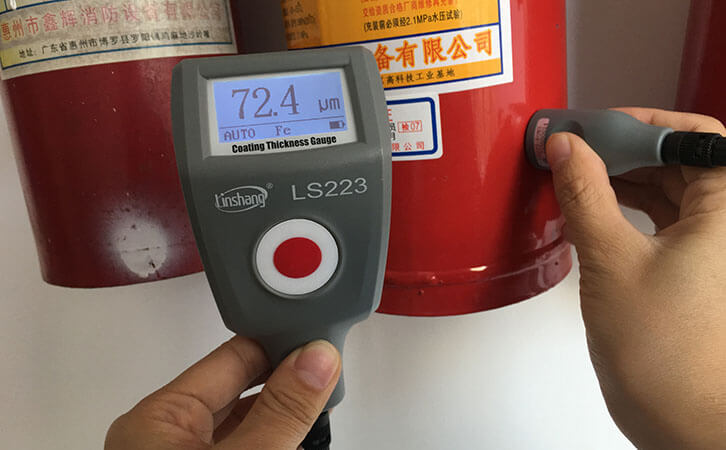How much do you know about Paint Mil Thickness Tester?
The thickness of the paint film is an important factor affecting the quality of the product. Too high or too low the thickness of the paint film may cause the appearance of the product and the protective properties of the paint film to change. In order to accurately measure the thickness of the paint film, a paint mil thickness tester can be used.
1.Necessity of paint painting thickness detection
The effect of different types of paint is different, and the requirements for their painting thickness are also different. For the paint painting of steel structures, the complete anticorrosive paint painting structure is generally composed of multiple layers of anticorrosive primer and topcoat. The painting thickness of the steel should be appropriate. Although too thick, it can increase the protective ability, but it will also cause the adhesion and mechanical properties of the layer are reduced, and the cost is increased; too thin painting thickness is easy to produce pinholes and other defects that are invisible to the naked eye, and cannot achieve the effect of isolating the environment and expected protection.
Under normal circumstances, the total thickness of the dry film on the surface of the steel structure member is generally 100 μm-150 μm. The indoor engineering must not be lower than 125 μm, and the outdoor must not be lower than 150 μm. The allowable deviation is 25 μm. The total thickness of the dry paint film can be increased to 200-220 μm at the seaside or at sea or in a strongly corrosive atmosphere. The number of painting structure brushing should not be less than 4-5. The thickness of each painting varies according to the type of painting and the construction method. Brushing construction should be thicker than painting applied by spraying. Under normal circumstances, the thickness of each layer of oily paint is about 35 μm, and the thickness of synthetic resin paint is 25 μm. The vinyl paint was 15 μm. The painting thickness of steel structures shall be measured with a paint mil thickness tester.
2. Specification for paint painting thickness detection
In order to accurately evaluate the thickness of the painting, it can be measured according to the following method. For floors and walls, measure at least 5 points in the selected area; for beams and columns, measure 6 and 8 points respectively in the selected position, and calculate their average values, accurate to 0.5mm.
3. Selection of paint mil thickness tester
Paint mil thickness tester is a non-destructive measurement of the thickness of non-magnetic paintings (such as aluminum, chromium, enamel, rubber, paint, etc.) on magnetic metal substrates (such as steel, iron, alloys, and hard magnetic steel). Testing instrument for the thickness of non-conductive paintings (enamel, rubber, paint, plastic, etc.) on non-magnetic metal substrates (such as copper, aluminum, zinc, tin, etc.).
LS223 paint mil thickness tester is also called coating thickness gauge, which is a professional instrument for measuring the thickness of metal surface paintings. This coating thickness meter uses the Hall Effect and eddy current effect principles to accurately measure the thickness of non-magnetic paintings on ferromagnetic metal substrates and the thickness of non-conductive paintings on non-magnetic metal substrates. Painting thickness gauge is widely used in metal processing industry, hardware industry, shipbuilding industry, aerospace industry and other fields.
4. Precautions for maintenance of paint mil thickness tester
Keep the paint mil thickness tester clean and avoid contact with moist, chemically corrosive substances or gases. After use, return the instrument to a protective and easy-to-remove box. The drastic changes in temperature will affect the measurement results, so the instrument should not be directly exposed to strong sunlight or sudden changes in temperature. Do not scrub the instrument with aggressive chemicals. Inspect the probes regularly and remove any dirt remaining on the probes. When the instrument is not used for a long time, remove the battery.
- High precision coating thickness gauge for used car
- Automotive paint protection films coating thickness gauge
- Plating Thickness Measuring Instrument for Detecting Anti-corrosion Coating
- Linshang LS220, LS191, LS160A– Necessary for Car Cover Inspection
- Coating Thickness Gauge for Second Hand Vehicle
- Zero Adjustment Step of Coating Thickness Gauge
